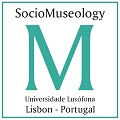CONCLUSION
Resumo
The comparison between museology’s trajectory/proposals and the framework of community development shows that this first is able to occupy a solid position in the world efforts for development today, complying with its dynamics, current trends and many of its demands. It is possible to identify in the museological discourse and action the influence of global transformations, such as the trends toward decentralization and localism, growing involvement of the voluntary sector and the emergence of grass roots movements. The same way, museology’s actuation reflects new trends concerning the nature of development actors, which in the past were concentrated in the intervention of the state and today comprise an active involvement of the civil society via social institutions (such as the museums, associations, universities), social, co-operative and grass roots movements (to which many of the experiences of new museology school of thought can be associated with), NGOs, etc. Rising priorities in the field of community development have also a place in the proposals of museology: environmental awareness, multicultural issues, focus on “people development” and the increasing interest on community economic development, among others.
Downloads
Política para Periódicos de Acesso Livre
Autores conservam os direitos de autor e concedem à revista o direito de primeira publicação, com o trabalho simultaneamente licenciado sob a Licença Creative Commons Attribution que permite a partilha do trabalho com reconhecimento da autoria e publicação inicial nesta revista.













